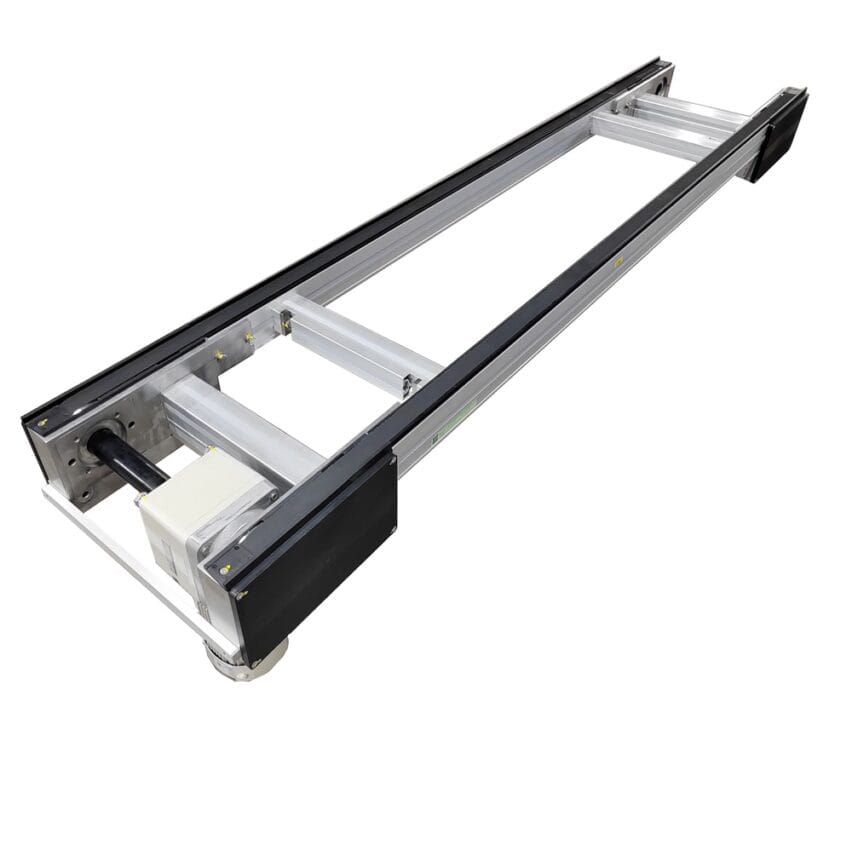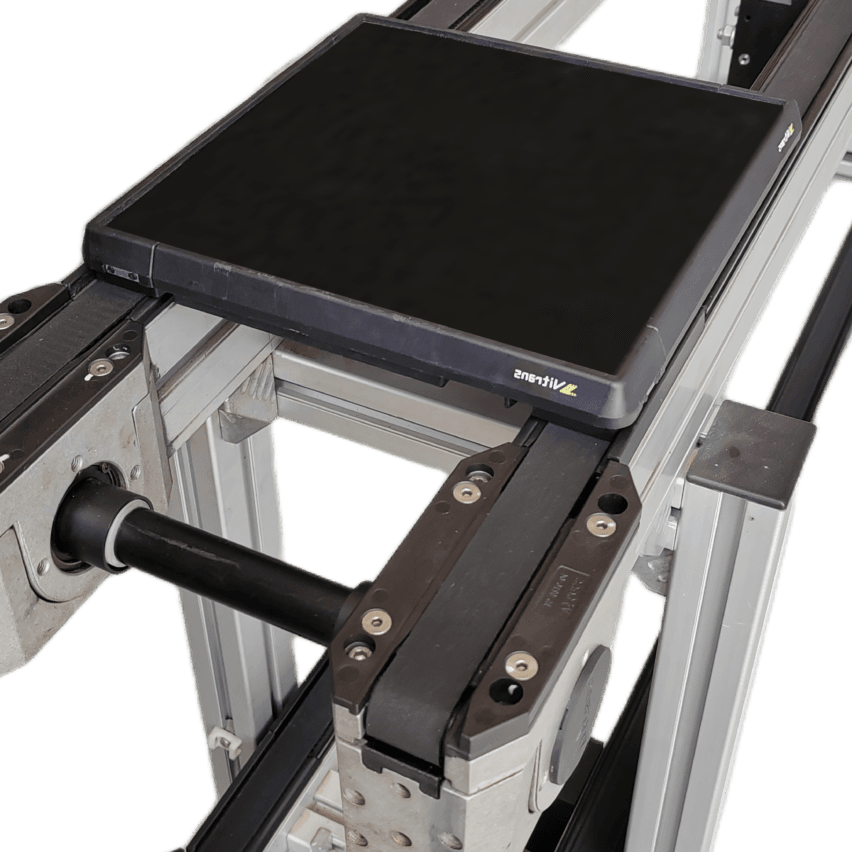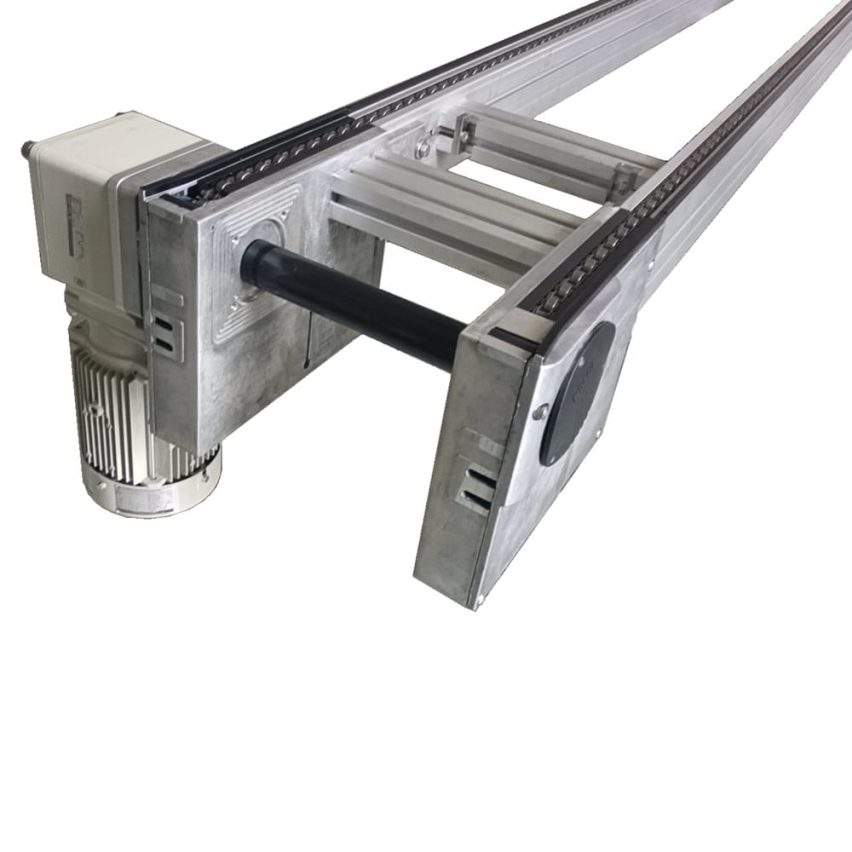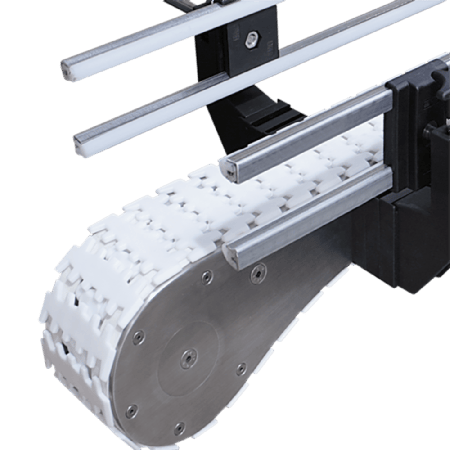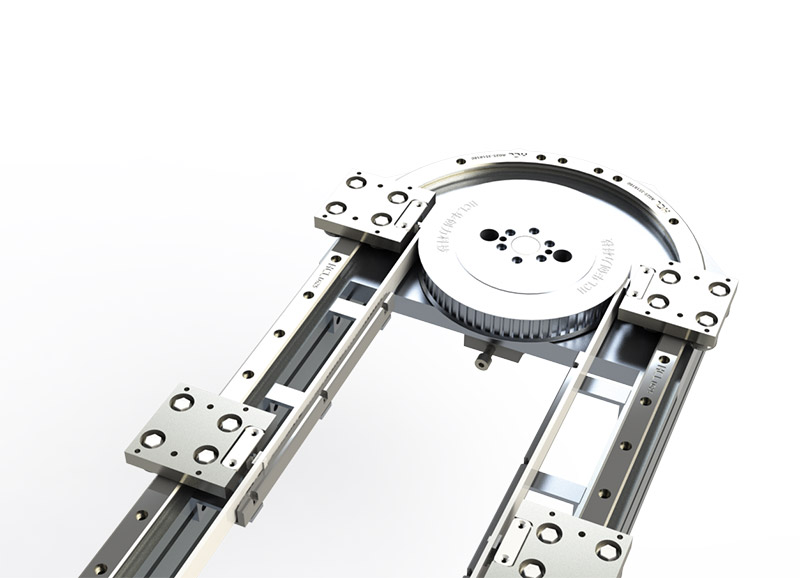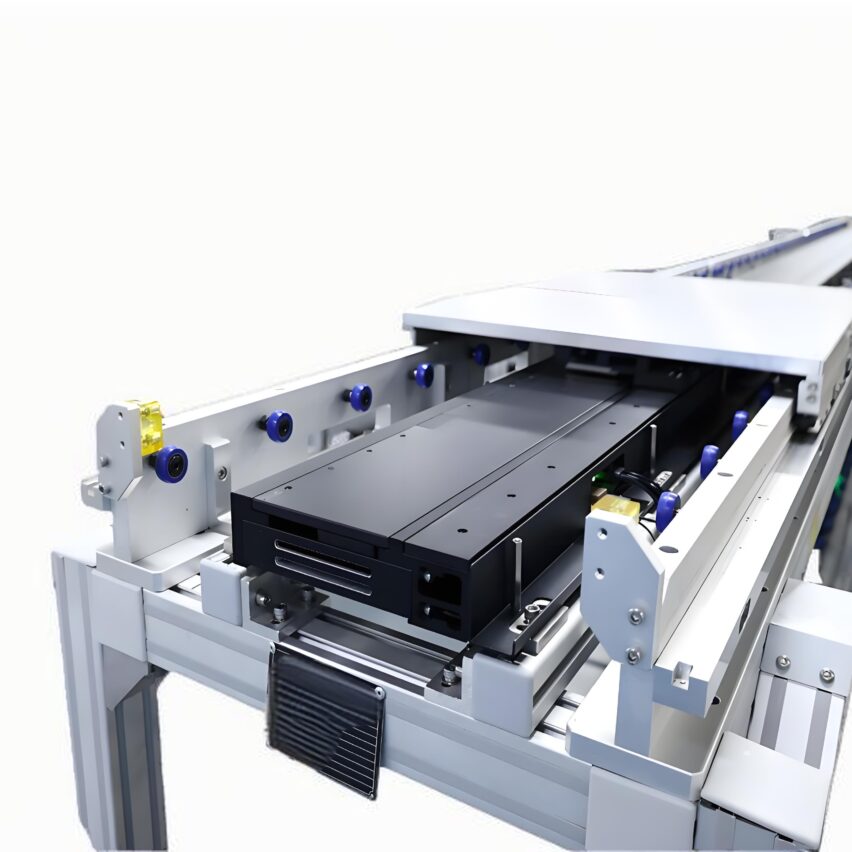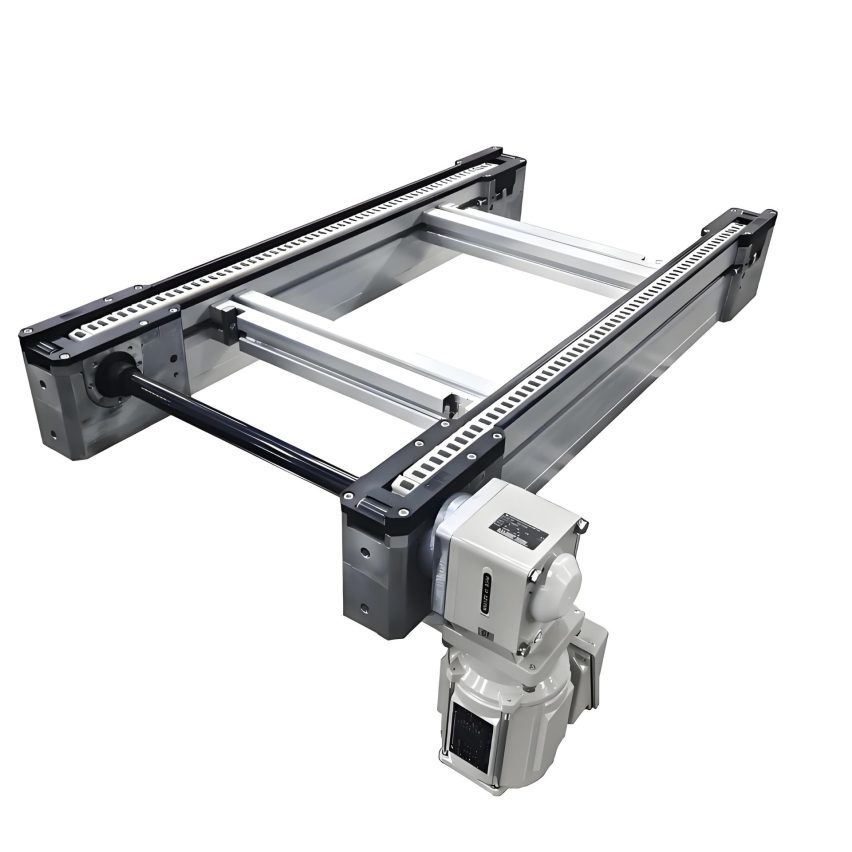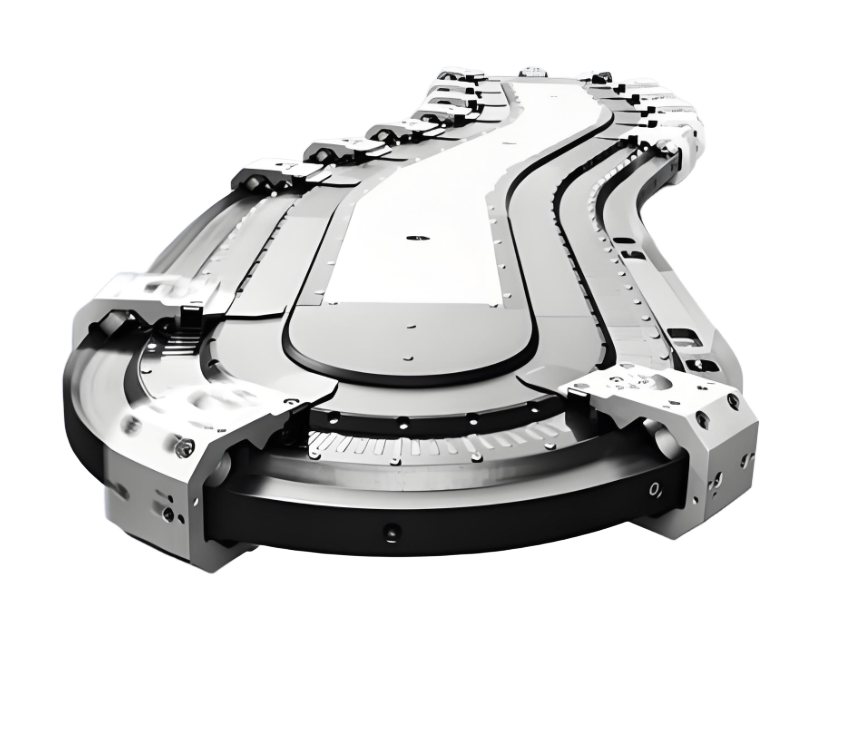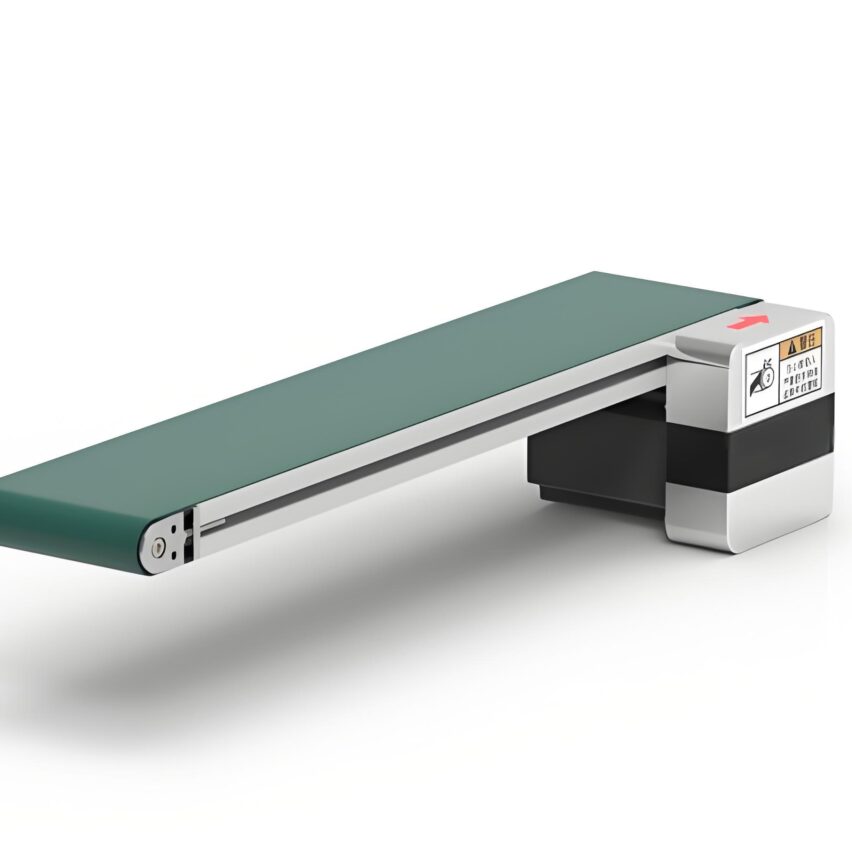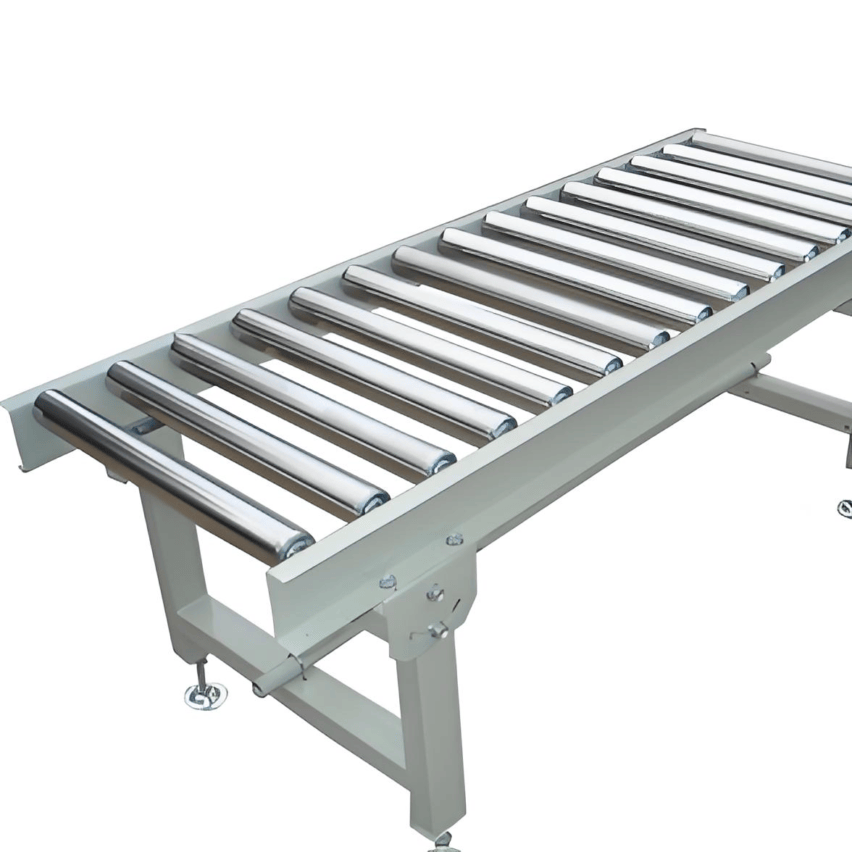The Physics and Spatial Value of 90 Degree Turns
The core growth rate mechanism of the multiplier chain stems fromDifference in diameter between roller (diameter D) and roller (diameter d)and its work plate speed formula isTotal V = V₁ × (1 + D/d)(V₁ is the chain speed), typical multiplier ratio 2.5-3 times. And the innovation of 90 degree turning mechanism on this basis is:
- spatial folding effectThrough 90-degree steering to transform the traditional straight-line conveying plane conflict into vertical synergy, an automotive plant test shows that the length of the production line compressed 40%, the unit area of production capacity increased by 2.3 times;
- Dynamic Torque Balancing: Outer roller linear velocity > inner, when turning.Differential Speed Compensation Algorithm(Automatic adjustment of sprocket speed based on radius difference) ensures zero deflection of the work plate;
- closed loopThe upper fully loaded chain (18 metres/minute) turns at 90 degrees to connect with the lower empty return chain (8 metres/minute), forming a "production-return-elevation" cycle, with a space utilisation rate of 3.1 times that of a traditional single-layer line.
personal viewpoint: A 90-degree turn is not just a change of direction, it's a"Leverage points for spatial entropy reduction.". In the case of a photovoltaic company, byElliptical wheel lifting system (Patent CN202222905222.0)Combined with the 90 degree steering module, it achieves stepless adjustment of the lower level from 0.8 to 2.5 metres, and is compatible with shaped battery modules - confirming that the"Topology optimisation cracks the spatial paradox of high-mix production better than physical expansion.".
Technical showdown between two types of 90-degree turning mechanisms
Circular belt turner: a flexible tool for light-duty scenarios
- Modular design: Aluminium alloy frame + T-slot guide rail, support RFID read head / vision sensor fast embedding (positioning accuracy ±0.1mm);
- Dynamic Adaptation Rules::
- Pallet aspect ratio ≤ 1.5 (anti-tip-over);
- Maximum load ≤150kg (engineering plastic roller load limit);
- Turning radius ≥ 600mm (to guarantee centrifugal stability).
Chain turners: rigid and flexible for heavy-duty scenarios
- Alloy chain plate structure: Hardened alloy steel plate (tensile strength ≥1200MPa) with hydraulic damping hinges to counteract Class VII vibration of 2000kg load;
- Pressure Transfer Design::
- Patent for hosting platform (CN219905685U)Sharing the pressure of 60% to avoid deformation of the doubler chain under pressure;
- Hollow weight reduction design of the support column (weight reduction holes reduce the moment of inertia);
- Minimum radius of curvature 1200mm (adaptable to large size materials such as automotive battery packs).
Intelligent Collaborative Control
- PLC anti-collision systemLaser distance sensor monitors the distance between the loads in real time and automatically reduces the speed to 8 metres/minute when the deviation is more than 5mm;
- Energy Efficiency Optimisation Engine: 25% speed boost during valley power hours + 23% braking power recovery by Schneider ATV630 inverter, with a combined energy consumption reduction of 35%.
The Three Life and Death Lines of Systems Integration
Spatio-temporal coupling of the transfer machine to the turn
- Three-axis linkage mechanism90 degree turn end connecting Z-type transfer machine, cylinder jacking (0.8-2.5m stroke) + servo rotation (±0.05° accuracy), to achieve 15m high altitude workpiece plate zero vibration transfer;
- beat synchronisation algorithm: EtherCAT bus synchronises turner and multiplier chain speeds, blocker response <50ms, SMT placement line wait time reduced by 55%.
The game of clean and anti-static
- Electronic workshop programme: Copper alloy guide rail + conductive roller combination, static dissipation <0.1 seconds; lower sealed guide rail + negative pressure dust removal, maintaining ISO 14644 Class 5 cleanliness;
- Pharmaceutical aseptic programmeNickel-plated stainless steel chain is resistant to acid and alkali corrosion, and its life span is 3.2 times longer than that of carbon steel; the guide rail is reserved with 0.2mm/m expansion joints to eliminate the -20℃ cold shrinkage stress.
Fault pre-adaptation system
- digital twin (heat map): Prejudging the wear point of high altitude turning section and increasing the lubrication point in advance to extend the chain life by 2.8 times;
- Lower Cache Track: Automatic diversion of workpieces in the event of an abnormality, and the scope of influence of the fault is reduced to 30%.
The real-world answer from the industry's conqueror
Automotive Battery PACK Assembly
- 2000kg heavy duty shockproof: Double rows of doubled speed chain + chain plate type turner (radius of curvature 1200mm), offset ≤ 0.3mm;
- Closed loop static prevention and control: Integrated copper brushes in the turnouts to export the charge and avoid short-circuiting the battery.
3C Electronic High Speed Mounting
- Microtempo Optimisation: Round belt turner (pallet aspect ratio 1.2) articulates the patch stations and the changeover time is compressed to 2 seconds per unit;
- Dust Free GuaranteeSealed hood + ion wind screen to block dust, zero detection of particles >0.5μm in size.
Pharmaceutical aseptic filling
- hygienic design: Seamless welded chain plates + food grade coating, FDA 21 CFR 177.2600 certified;
- Temperature drift suppressionThermal expansion coefficient self-compensating guide, deformation <0.1mm/m under 40℃ temperature difference.
controversial insight:.The value of a 90-degree turn is not in the "turn" but in the "space fold".! A logistics centre throughtopology optimisation algorithm(reconfiguration of linear conveyor into hexagonal honeycomb layout), replacement of traditional production line with 12 sets of 90-degree turning machines, space capacity density increased to 4.7 times -Demonstrating that "spatial reconfiguration efficiency" is a better way to rewrite the manufacturing paradigm than simply increasing transport speeds.
Self-questioning: the core concern of smart upgrading
Q:How to solve the offset of work plate when turning?
A: Mechanical and intelligent dual-track correction:
- structural design: Chain plate turner with hydraulic damping hinges to counteract centrifugal forces;
- dynamic compensation: Encoder monitors the speed difference between inner and outer rails in real time, PLC adjusts the sprocket speed automatically;
- Path optimisation: Minimum radius of curvature ≥ 600mm (light load) / 1200mm (heavy load).
Q: How can small and medium-sized plants be deployed at low cost?
A: Economic "three-step" strategy:
- initial stage: Carbon steel base model round belt turner (cost 40% less than chain plate type), load limit 150kg;
- mid-term: Add inverter module to achieve valley power speed control, 1.8 years payback;
- at a fixed date in the future (e.g. for repayment): Deploying digital twins reduces O&M costs by another 38%.
Q: What about wear and tear due to high frequency turning?
A: Pre-adaptive maintenance system:
- Material upgradesNitriding treatment chain plate is resistant to 600℃ spark splash;
- Intelligent Lubrication: High temperature grease is automatically injected when the coefficient of friction > 0.15;
- Heat map warning: AI analyses historical data and replaces high-risk zone links in advance.
When a set of double-layer speed doubling chain carrying 300kg car battery packs rushes into a 90-degree chain plate turner at 18m/min, the dance of rollers and algorithms on the curved trajectory with a radius of curvature of 1,200mm is reconfiguring the paradigm of spatial efficiency. A car company's real-world testing reveals.Topology-optimised layout (with 90-degree turns) enables 4.2 times the capacity density per unit volume of a conventional linear production line.--This is a sign that the competition in the manufacturing industry has been upgraded from "speed of delivery" to "speed of delivery".Complex wars of "spatial folding intensity" and "data penetration". In the next decade, the core indicator of the value of the production line may be the entropy reduction elasticity and reconfiguration accuracy of the spatio-temporal resources per cubic metre of plant.

